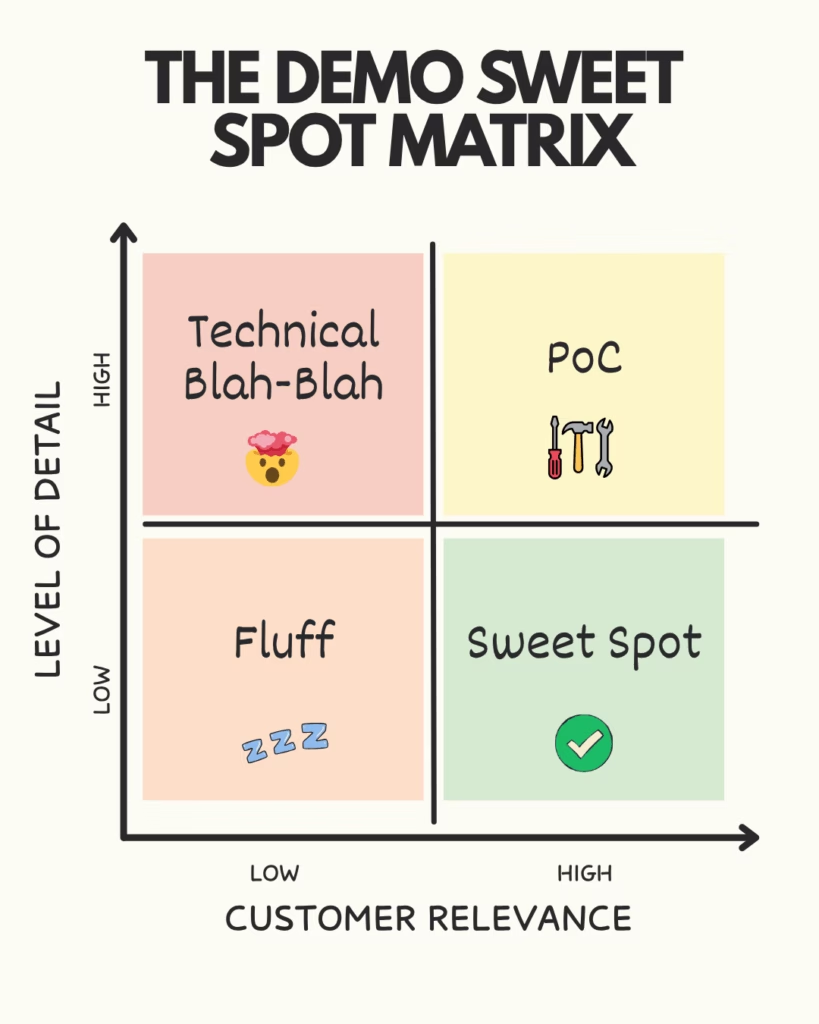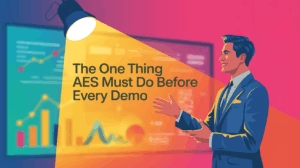For a long time, I believed my job during a demo was to say everything I knew.
Every feature. Every workflow. Every corner of the product.
I convinced myself it was the right thing to do.
“If they have all the information, they will make the right decision.” That was the story I kept repeating.
Looking back, it feels almost funny.
Because the reality was the complete opposite.
What I was actually doing was overwhelming people.
Not helping them. Just adding pressure and noise.
I flooded their brains with details they never asked for.
Half of it did not matter to them. The other half was forgotten five minutes later.
More detail does not mean more value.
And more product knowledge does not create more confidence.
Not everything we can show is worth showing.
This lesson took me more time than I want to admit.
At some point, after a few painful facepalm moments, something clicked.
I realised that good demos live at the intersection of two things: the right level of detail and strong customer relevance.
Please see the visual below that helped me visualise what I had been doing wrong for years:

In the top left, you have “Technical Blah-Blah.”
This is where you give too much detail that nobody asked for. It sounds impressive to you, but confusing to everyone else.
In the bottom left, you have “Fluff.”
This is when you stay vague because you do not want to risk going deeper. It feels safe, but it is not useful.
In the top right, you have “PoC Territory.”
This is where deep technical detail actually matters, but only when the customer explicitly wants it and is ready for it.
And then there is the bottom right.
The Sweet Spot.
This is where the magic happens.
The demo becomes relevant, focused, and easy to follow.
You show enough detail to make it believable.
But not so much that it becomes a second job to follow along.
You connect what the customer shared with what your product can do.
You link concepts to outcomes. Problems to capabilities. Pain points to solutions.
This is where the nodding starts.
This is where customers lean in instead of leaning back.
It is also the moment where the deal actually begins to move.
Because customers understand the value without getting lost in the noise.
Finding this Sweet Spot takes intention.
It does not happen by accident.
You need to be clear about the problem.
You need to understand what this customer cares about today, not in general.
You need to strip away everything that is “nice to have” but not impactful.
Most demos fail because the SE tries to show too much, too early.
Once I learned this, my entire approach changed.
I stopped trying to impress people with everything I knew.
Instead, I focused on connecting.
Connecting customer context to product capabilities. Connecting today’s pain to tomorrow’s outcome.
I realised that the best demos are not encyclopedias.
They are conversations with a purpose.
So here is the simple rule I wish I had learned earlier.
Do not measure your demo by how much you said. Measure it by how much the customer understood.
Your job is not to show everything.
Your job is to show the right things.
When you hit that Sweet Spot, the demo feels lighter.
The customer feels smarter. And the next step becomes obvious.
You do not win by overwhelming.
You win by making it easy to say yes.
So do not try to impress.
Try to connect.





